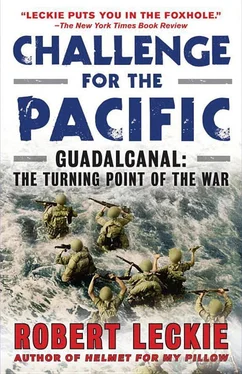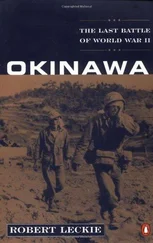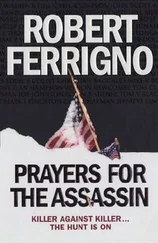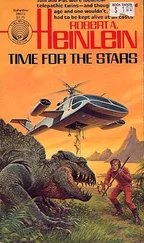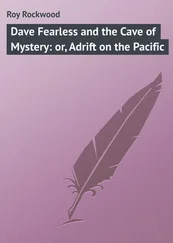On April 2 Commander Yasuji Watanabe, operations officer of Combined Fleet, came to Tokyo to present Yamamoto’s plan. He met Commander Tatsukichi Miyo, representing Navy General Staff. Like most Staff officers consulting the victory-men of Fleet, Miyo was carefully courteous. He did not decry but plead. He was almost in tears as he tried to warn Watanabe of the dangers of the Midway operation. 4But Watanabe was obdurate, and the debate continued for three more days. On April 5, as though weary of the wrangle, Watanabe arose from the conference table to place a direct call with Admiral Yamamoto aboard Yamato . He returned to state Yamamoto’s uncompromising position:
“In the last analysis, the success or failure of our entire strategy in the Pacific will be determined by whether or not we succeed in destroying the United States Fleet, more particularly its carrier task forces. The Naval General Staff advocates severing the supply line between the United States and Australia. It would seek to do this by placing certain areas under Japanese control, but the most direct and effective way to achieve this objective is to destroy the enemy’s carrier forces, without which the supply line could not in any case be maintained. We believe that by launching the proposed operations against Midway, we can succeed in drawing out the enemy’s carrier strength and destroying it in decisive battle. If, on the other hand, the enemy should avoid our challenge, we shall still realize an important gain by advancing our defensive perimeter to Midway… without obstruction.” 5
It was obvious that Isoroku Yamamoto was determined that his plan should carry. With great reluctance Rear Admiral Shigeru Fukudome turned to Vice-Admiral Seiichi Ito to ask in a low voice: “Shall we agree?”
Ito nodded silently, and Watanabe left the conference room beaming.
Nevertheless, Naval General Staff’s approval was not wholehearted. Bickering over the date began. Fleet wanted Midway to take place in early June, Staff rather more like early July. And this may have been because the Naval General Staff’s operation against Australia was already begun.
The Japanese aerial onslaught against Port Moresby and Tulagi was mounting. To help press it, Saburo Sakai’s squadron had been transferred on April 8 to the new base at Lae on New Guinea. Lae was closer to Port Moresby. It was also a pesthole. Its airfield was even smaller and bumpier than Vunakanau at Rabaul and the food was abominable.
Each morning the pilots arose at three-thirty to gulp down an unpalatable breakfast of rice, soybean-paste soup, dried vegetables, and pickles. Then, at eight o’clock, they flew either patrol or fighter missions. Back for lunch of rice and canned fish or meat, which was repeated for dinner, the pilots either went on standby duty, or roared aloft to intercept sudden enemy attacks, until, at five o’clock, they assembled for calisthenics. After supper they read or wrote letters home or held impromptu concerts with accordions and harmonicas and guitars.
It would have been a dull and deadly routine but for the constant thrill of aerial combat. Day after day, for four months, Saburo Sakai gunned his mud-brown Zero aloft from the strip at Lae, climbing high into the sky to go winging over the towering 15,000-foot Owen Stanley Mountains standing between Lae and Port Moresby, and to fall upon the enemy with flaming guns. Steadily his score of kills mounted: twenty… thirty… forty… fifty… It seemed incredible. Saburo was easily Japan’s greatest ace, and his fame went far and wide through the homeland and the South Seas.
One day a rookie pilot named Hiroyoshi Nishizawa joined the squadron. Saburo was astonished to see with what skill Nishizawa shot down an enemy Airacobra on his first flight. Nishizawa was a natural, and Saburo wondered if he was not also better than he was. One thing Saburo did know: neither he nor his comrades were very fond of Nishizawa. Silent and surly, this skinny youth of twenty-three years kept to himself. He was rarely seen smiling, unless it was the bloodless grimace with which he reported a fresh kill. “The Devil,” they called him.
Another accomplished rookie pilot was Toshio Ota, who was even a year younger than the Devil. Sakai, Nishizawa, and Ota, Japan’s three top aces in that order, they were soon to become the scourge of New Guinea, kings of the air above the bright blue Coral Sea, and the squadron in which they flew was by far the most outstanding in the war.
Lieutenant (j.g.) Junichi Sasai commanded the squadron. The men loved him. Unlike most graduates of Eta Jima, the Japanese Annapolis, he had compassion for the enlisted men. He haggled with the quartermaster for the candy they needed to replace energy sapped by ceaseless combat, or he “procured” cigarettes for them. They called Lieutenant Sasai “The Flying Tiger,” not in allusion to the American Volunteer Group of pilots whom Saburo had met in China, but because of the roaring tiger carved on the big silver belt buckle he wore. In Japanese legend, a tiger prowls a thousand miles and always returns from his hunt. That was the meaning of the buckle. Sasai’s father, a retired Navy captain, had made three of them, giving one to his son and the other two to his sons-in-law.
One of these sons-in-law, Lieutenant Commander Yoshio Tashiro, was the pilot of a four-engined Kawanishi flying boat. He was, that April, based at Rabaul—flying bombing missions south to Tulagi.
Martin Clemens was sure that the big Kawanishis turning from their bombing runs at Tulagi could not possibly spot the red tiles of his roof. Still, they gave him the shivers when they thundered low over Aola Bay on Guadalcanal. It was not so much that there seemed to be more of them every day, it was that they had absolute control of the air. Clemens didn’t even bother to look up when he heard airplane motors. He knew that they would be Japanese. The Australian seaplanes, being much smaller than the Kawanishis, generally went and hid when they had wind of an air raid.
Clemens felt very lonely and exposed. He was not heartened by the fact that the Australians had already informed him of the code signal that would signify their departure. It was “Steak and eggs,” or, as the Aussies with their cockney accents pronounced it, “Styke ’n ayggs.”
It only served to remind Clemens that his food was running low.
Out in the “boondocks” at Onslow Beach in North Carolina the only eggs served were powdered—much to the disgust of Archer Vandegrift, who had never forgotten the reek of a Chinese powdered-egg factory—and the only steak was a soggy counterfeit which the cooks coyly called “Swiss steak” and for which the troops had coined more colorful names, the only printable one of which was “boiled boondocker,” boondockers being the crepe-soled buckskin boots which Marines wore while tramping the boondocks, or wild country.
In early April, Vandegrift’s division was beginning to coalesce. The boots had lost their frightened look and no longer said “Sir” to corporals or saluted anyone whose clothes seemed to fit. They had begun to swagger a bit. They were getting salty enough to speak of the floor or ground as “the deck,” to “shove off” rather than depart, to “go ashore” when they went into town, and to ask, whenever they were out rumor-mongering—the favorite pastime of all good armies since Agamemnon’s—“Hey, what’s the scuttlebutt?”
Even old-timers such as Master Gunnery Sergeant Lew Diamond, a white-haired Marine brahmin with a goatish goateed face and a bearish body, would concede grudgingly, “Them knotheads may not be so bad, after all,” and Sergeant Manila John Basilone had ceased to “snow” his machine-gun section with lurid tales of life on Dewey Boulevard in Manila and had granted that all of them had not been found under flat stones and might possibly have had an earlier and human existence elsewhere. These young Marines thought of themselves as the best fighters in the world, although the only fighting they had done had been with an occasional soldier or sailor unfortunate enough to come home on leave to New River or nearby Jacksonville, or with each other in the unpainted shacks which followed them to the boondocks and sold them beer at fifteen cents a bottle and canned patriotic ballads such as “Goodby Mama, I’m Off to Yokohama,” at five cents per sentimental song. Sometimes moonshiners visited the pine woods where the First Marine Division lived in pup tents and slept on the ground. The moonshiners sold the Marines jugs of that potent corn whisky called “white lightning.” Navy medical corpsmen and physicians who operated the battalion aid stations known as “sick bays” always could tell when the moonshiners had been around: there were twice as many men on sick call and the gentian violet had to be spread thin to cover all that bruised and battered flesh.
Читать дальше
